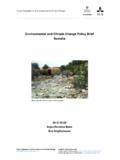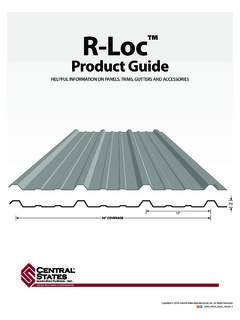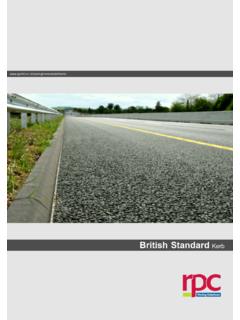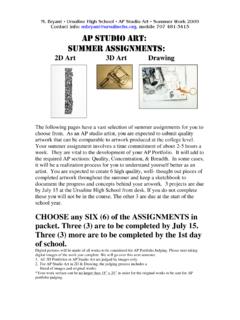Transcription of Metals,(Nonmetals,(and(Metalloids( - VDOE
1 Science Enhanced Scope and Sequence Physical Science Virginia Department of Education 2012 Metals, Nonmetals, and Metalloids Strand Matter Topic Investigating metals, nonmetals, and metalloids Primary SOL The student will investigate and understand the organization and use of the periodic table of elements to obtain information. Key concepts include b) classification of elements as metals, metalloids, and nonmetals. Related SOL The student will demonstrate an understanding of scientific reasoning, logic, and the nature of science by planning and conducting investigations in which j) valid conclusions are made after analyzing data.
2 Background Information The majority of the elements on the periodic table are metals. Metals can be identified based on similar physical and chemical properties. Metals are lustrous (shiny), ductile (ability to be drawn into thin wires), malleable (ability to be hammered into thin sheets), and conduct electricity and heat. Most metals are dense and melt at high temperatures. Nonmetals are located on the right side of the periodic table and are dull, brittle, and do not conduct heat or electricity.
3 Elements with properties in between those of metals and nonmetals are called metalloids. Metalloids are located in between the metals and nonmetals on the periodic table. For example, many metalloids are used as semiconductors that are commonly used in computers and other electronics. Materials Samples to test ( , iron, copper, aluminum, tin, iodine, boron, charcoal, wood, plastic, glass) Three wires Battery Light bulb Plastic bag Hammer Safety goggles Vocabulary conductivity, ductile, luster, malleable, metal , metalloid , nonmetal Student/Teacher Actions (what students and teachers should be doing to facilitate learning)
4 In this lab activity, students will use observations and tests to decide whether an unknown sample is a metal , nonmetal , or metalloid . Science Enhanced Scope and Sequence Physical Science Virginia Department of Education 2012 Procedure 1. Have students record the sample s color and luster in a table like the one at right. 2. Conductivity test: Have students prepare to create a circuit by connecting one end of a wire to a battery.
5 Temporarily leave the other end of this wire loose. Connect a second wire between the other end of the battery and a light bulb. Connect a third wire to the other side of the light bulb. Temporarily leave the other end of this wire loose. Connect the sample between the two loose ends of wire: one from the battery and one from the light bulb. Have the students create a scale from bright to not lit and use that scale in their description.
6 If the light bulb glows, the students should conclude that the sample conducts electricity. The students may also connect a multimeter or voltage sensor to measure the flow of electricity through the wire after it passes through the sample. 3. Brittleness test: Have the students create a test for brittleness. If the sample breaks, the students should conclude that the sample is brittle. Have them record their results in the table.
7 4. Malleability test: Wearing safety glasses, have the students put the sample in a plastic bag and hit it with a hammer. If the sample flattens, the students should conclude that the sample is malleable. If the sample breaks or doesn t change, the students should conclude that the sample it is not malleable. Have them record their results in the table. Assessment Match the property with its definition: _____ luster a. ability to be hammered into thin sheets _____ malleable b.
8 Ability to conduct electricity _____ ductile c. shininess _____ conductivity d. ability to be drawn into thin wire If an object is identified to be lustrous, malleable, ductile, and conductive, should it be assumed that this object is a metal or nonmetal ? Where are the metals located on the periodic table? Where are the nonmetals located? What are three differences between metals and nonmetals? What are metalloids? List each sample you tested in the appropriate column of the following table: Metals Nonmetals Metalloids Extensions and Connections (for all students) Have students research and develop other ways to test whether a sample is a metal , nonmetal , or metalloid .
9 Have students create a list of examples of household items that contain a metal , nonmetal , and metalloid . Sample Color Luster Conductivity Brittleness Malleable Science Enhanced Scope and Sequence Physical Science Virginia Department of Education 2012 Strategies for Differentiation Provide diagrams to illustrate step 2 in the Procedure section. Have students color- code metals, nonmetals, and metalloids on the periodic table.
10 Have students identify and describe the properties of alkali metals, alkaline earth metals, transition metals, lanthanides, and actinides. Students should color- code a periodic table to identify each of these groups. Add an extension onto the samples chart to provide space for the household items. This allows students to use classroom information as a guide to complete the extension activity. Have students create a cartoon character that represents each of the vocabulary words in the lesson.















